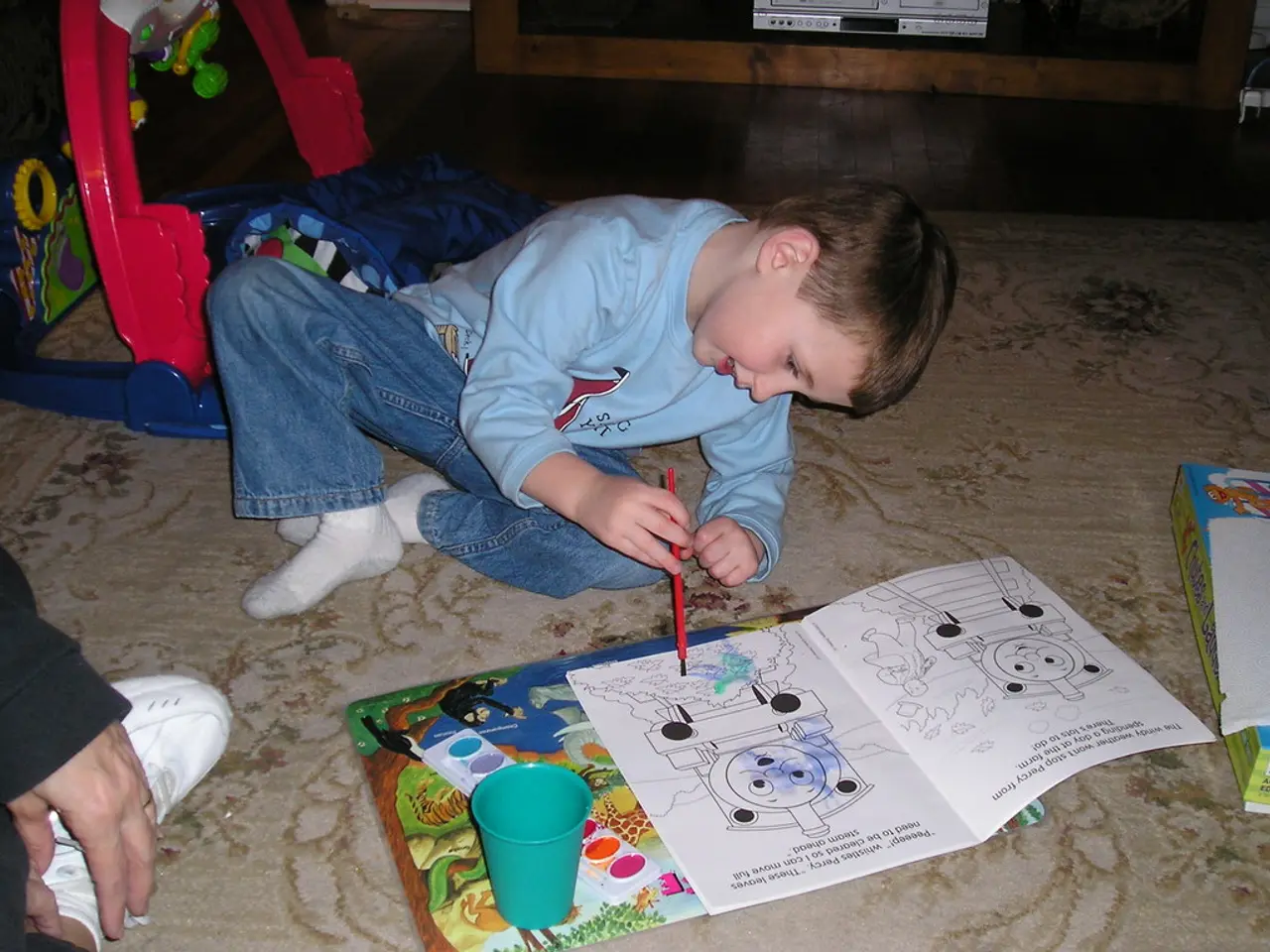Domestic Methods to Foster and Cultivate Imagination
Creating a Creative Home Environment for Your Child's Growth
A creative home environment can help nurture your child's imagination and cognitive development, setting them up for success in the changing world of education. Here are some strategies to create such an environment.
Provide Open-Ended Materials
Stock your home with open-ended materials like paper, crayons, cardboard boxes, and playdough. These materials encourage free exploration and creativity without rigid instructions.
Encourage Unstructured Playtime
Unstructured playtime allows children to experiment with their own ideas, fostering creativity and cognitive development.
Dedicate a Creative Space
Create a dedicated space for arts, crafts, music, or other creative activities. This inviting space can be an art corner, music zone, or a craft table.
Use Imaginative Room Décor
Use creative room décor to spark your child's imagination. Consider murals, feature furniture painted in bold, imaginative colors, or soothing color palettes for a balanced environment.
Limit Screen Time
Limit screen time to encourage hands-on, active engagement in creative activities.
Positive Reinforcement
Celebrate and appreciate your child's ideas and efforts to boost their confidence and motivation in creative pursuits.
Organized Storage
Organized storage and clearly defined play areas can help foster focused activity and reduce clutter.
These strategies create an environment where children feel safe and excited to experiment, imagine, and develop cognitively through creative play.
Boosting Creativity and Learning
Creativity boosts problem-solving skills and learning from failure increases creative potential. Encourage experimentation, taking risks, and having fun with the creative process.
Role Play
Role play encourages self-discovery, improves cognitive development, boosts neural plasticity, and enhances memory and spatial navigation. Children over three can tell the difference between what's real and what's not during role play, making it a valuable tool for learning social cues, emotions, and communication.
Engaging in Creative Activities
Engaging in creative activities together can greatly improve well-being and bring you and your child closer. Invite your child to help with projects like rearranging furniture or planting a garden.
The Power of Example
Children learn more from what parents do than what they say. By nurturing creativity at home, you create a space where their imagination can run wild and encourage them to find what they love and grow as individuals.
Embrace Creativity
Embrace the power of creativity at home. Remember, creativity has many forms, and there's no one "right" way to express it. The heart of creativity is in being true to oneself.
[1] Creative Homes: Designing for Kids' Imagination and Cognitive Development
[2] The Importance of Creativity in Childhood Development
[3] How to Encourage Creativity in Kids
[4] The Benefits of Encouraging Creativity in Children
- Creating a creative home environment can also aid in the development of social skills and emotional intelligence in children by providing opportunities for experimentation, role play, and self-expression.
- Encouraging equality in creative pursuits can foster a sense of respect and mutual understanding between parent and child, strengthening the parent-child relationship.
- By promoting a creative, stimulating home environment, parents can help contribute to their child's long-term health-and-wellness and overall lifestyle, setting a foundation for success in education, science, home-and-garden, and other areas of life.
- Engaging in creative activities together not only boosts well-being and brings families closer, but it also provides opportunities for conversation, education-and-self-development, and shared experiences.
- The strategies employed to create a creative home environment can also extend to other aspects of life, such as organizing a productive workspace for adult activities in the home, encouraging a focus on creativity in various areas like work, hobbies, or personal projects.
- As you design your child's environment for creative growth, consider reference materials like "Creative Homes: Designing for Kids' Imagination and Cognitive Development," "The Importance of Creativity in Childhood Development," "How to Encourage Creativity in Kids," and "The Benefits of Encouraging Creativity in Children" to gain further insights and practical tips for nurturing creativity in your child's life.




